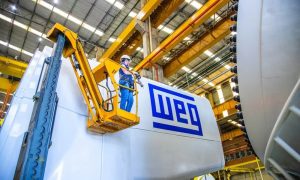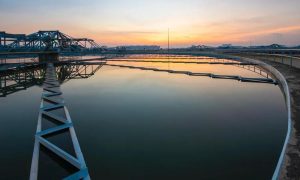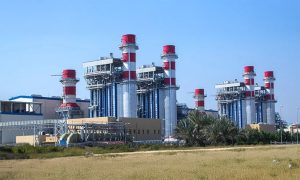Construction in the future – A safer industry?
Thomas Bradley of Mobile Mini explains why the pandemic can help push the construction industry forwards

The foundations of the construction industry have been shaken following years of economic uncertainty, Brexit, and now even a pandemic to confront. However, with the easing of lockdown restrictions and an investment of £1.3 billion from the government for the construction of new houses, we can hope for a brighter future for the industry.
Are we seeing a recovery?
The HIS Markit/CIPS Purchasing Managers’ Index (PMI) rating was the first indicator to suggest that we were experiencing the early signs of a slow recovery, at least from an economic point of view.
Used to highlight global economic trends in the manufacturing and service sectors, June’s record jump of 11.4 index points was a five-month high — and a statistic that shows a correlation between lockdowns easing and economies starting to recover.
However, the global index reaches further than just the UK. Therefore, we must continue to research how the current situation is affecting the country’s construction output.
According to the Office for National Statistics (ONS), construction output in the UK fell by 40% in April this year, with the coronavirus contributing to a fall of 41.2% in new work and 38.1% in repair and maintenance.
This is the largest drop since records began 10 years ago, representing a financial hole of £5.1 billion for the construction industry. May’s figures show a small sign of improvement for construction output, with an 8.2% increase — compared to April’s figure — being accredited to the easing of lockdown restrictions.
Building a safe workplace
The economic recovery and the output of construction will take time to meet the pre-lockdown level of productivity that we expect. The virus is also affecting how construction workers return to the workplace now. Measures are being made to protect the health and safety of these workers.
While construction is already an industry familiar with stringent and numerous health and safety measures, social distancing and hygiene are showing their precedent in the workplace. There is now an even greater focus on health and safety in the construction industry.
Firstly, the Building Safety Bill continues reforms of the fire safety system in buildings — for how a building is built and how safe it is once the structure is complete. Next, the ‘Construction Leadership Council’s Site Operating Procedures’ during COVID-19 is aimed at protecting workforces from the virus.
The latter is known for its introduction after the devastation of the Grenfell Tower disaster. It will develop over time, as the guidelines have already had five iterations, with plenty more issues to be produced if the pandemic continues to change at a speed that feels like it’s overnight.
Working conditions must continue to move forward positively, and both are positive steps for achieving this.
While separate legislation, the documents are closely linked. Without the Safety Bill, you run the risk of unsafe buildings built in an unsafe way, and without the guidelines for working during COVID-19, you can’t implement the new ways in which buildings have to be built, all the way from design to completion.
Through all this, we must remember the reality of the working environment. Life on a construction site can be challenging. It’s less collaborative working spaces and more using the land in which the building is being built on.
On-site facilities will be impacted by social distancing guidelines. These spaces include offices, canteens, drying rooms, toilet blocks, and storage facilities in a variety of sizes and layouts — with these facilities often found inside a storage container.
The measures to ensure safe social distancing will be difficult to implement, with the additional threat of site closure if guidelines are not implemented correctly.
However, industry specialists have helped to create a safe working course for the industry. CovCert is an online programme designed to provide employees with an understanding of how to work safely and minimise the risks from COVID-19.
Industry leaders Green Hat Consulting and construction workforce specialist Sphere Solutions have collaborated on this initiative — and will serve to educate and ensure that construction sites continue to be safe and compliant.
Managing director of Green Hat Consulting, Andrew Warring, said: “CovCert is aimed at employees who are returning to work on construction sites. The courses are intended to raise Covid-19 awareness and provide employees with the knowledge required to minimise the risk of transmission and infection within the workplace, as well as providing an induction for new employees and informing on up to date guidance.”
With uncertainty over how safe the working environment can be following lockdown; this is another step towards normality and ensuring workers that they can be safe at work.
This can in no doubt benefit the company they work for and the projects that they’re helping to complete.
The fortunes of the construction industry may be on the rise, with early positive indications looking towards a stable recovery. Of course, there are still unknown factors, including the actual impact of Brexit. With such an unpredictable virus and landscape for the world of construction, it’s important that small steps are made as frequently as possible to avoid another decade in the doldrums.

























